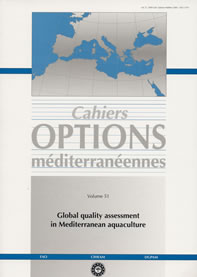| Article précédent | p. 63-69 | Article suivant |
New methods to determine fish freshness in research and industry
First, the quality definition is discussed, considered as a broad concept, addressing all the features of the fish appreciated by a potential consumer. Fresh fish is a product with a very short commercial life, and a high variability. In fact, the number of marketable species is enormous. Those characteristics make very difficult to apply the same systems used in other foods. New economic and fast determinations are necessary to develop applying these on three premises: (i) consideration of fish autolysis in the freshness determination; (ii) development and study of forward markers of fish spoilage; and (iii) a double requirement in the development of these forward markers - rapidity and reliability. Different recommended methods and analysis are discussed such as: rigor mortis, objective methods (amine concentration, nucleotides, protein modifications and lipid oxidation), rapid microbiological determinations and enzymatic and histological analysis.
- [ Afficher ]
- [ Télécharger ]
- [ Exporter la citation ]
Vous pouvez télécharger la citation au format :
- [ Imprimer ]
-
Mots-clés
POISSON (ALIMENT), QUALITECiter cet article
Rodríguez-Jérez J.J., Hernández-Herrero M.M., Roig-Sagués A.X. New methods to determine fish freshness in research and industry. Global quality assessment in Mediterranean aquaculture. Zaragoza : CIHEAM, 2000. p. 63-69. (Cahiers Options Méditerranéennes; n. 51). Workshop of the CIHEAM Networks on Technology of Aquaculture in the Mediterranean (TECAM) and Socio-Economic and Legal aspects of Aquaculture in the Mediterranean, 1999/11/29-1999/12/01, Barcelona (Spain). http://om.ciheam.org/om/pdf/c51/00600292.pdf



